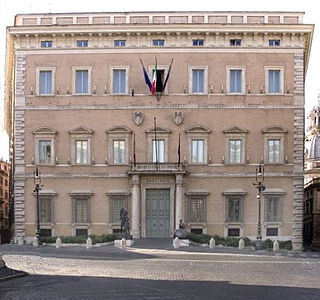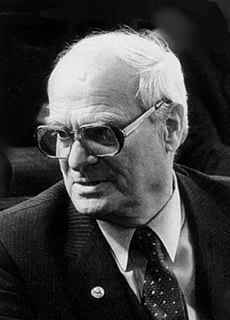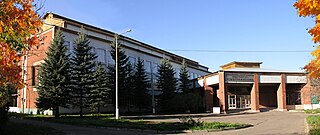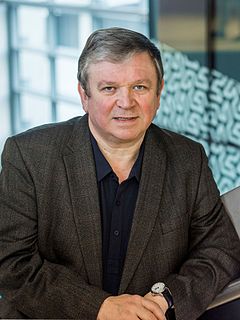 Mediterranean Institute of Fundamental Physics | |
| Motto | Dubium sapientiae initium. Memento audere semper |
|---|---|
Motto in English | From doubt comes wisdom. Mind daring always. |
| Type | Private |
| Established | 2010 |
| President | Dr. Giuseppe Eramo |
| Director | Prof. Alexey Kavokin |
Administrative staff | Anna Miroshnichenko |
| Location | , Italy 41°46′01″N12°36′59″E / 41.7670243°N 12.6163607°E Coordinates: 41°46′01″N12°36′59″E / 41.7670243°N 12.6163607°E |
| Colours | Red and Black |
| Affiliations | MIFP, Mediterranean Institute of Fundamental Physics |
| Website | www |
The Mediterranean Institute of Fundamental Physics, commonly known as MIFP, is a private independent non-governmental institution created in order to unite scientists in different countries around the world working in all fields of physics. MIFP is a non-profit organization whose main goal is to provide efficient and flexible management of international collaboration projects and teaching programmes, to ease and increase the communication between leading researchers in different areas of fundamental and applied physics, and to organize international scientific meetings, workshops, schools and conferences. [1] It is located in Marino, Rome, Italy.
Private universities are typically not operated by governments, although many receive tax breaks, public student loans, and grants. Depending on their location, private universities may be subject to government regulation. This is in contrast to public universities and national universities. Many private universities are non-profit organizations.

Marino is an Italian city and comune in Lazio, on the Alban Hills, Italy, 21 kilometres southeast of Rome, with a population of 37,684 and a territory of 26.10 square kilometres (10.08 sq mi). It is bounded by other communes, Castel Gandolfo, Albano Laziale, Rocca di Papa, Grottaferrata, and Ciampino. Marino is famous for its white wine, and for its Grape Festival, which has been celebrated since 1924.

The Province of Rome was one of the five provinces that formed part of the region of Lazio in Italy. It was established in 1870 and disestablished in 2014. It was essentially coterminous with the Rome metropolitan area. The city of Rome was the provincial capital. During the 1920s, the boundary of the province shrank as land was ceded to establish new provinces. The Province of Rome was the most populous province in Italy. On 1 January 2015, it was superseded by a new local government body - the Metropolitan City of Rome Capital.
Contents
Founded in July 2010 by a small group of researchers, by the year of 2012 MIFP numbers over one hundred members. During 2010, 2011 and 2012 MIFP has held, took part in, or partly sponsored more than ten international events in Armenia, Italy, Greece, France, Ukraine, Brazil, Thailand and Russia. [2] [3] [4] [5] [6] [7] The mean h-index within the MIFP members is 27. About 50% of the members represent Russian scientific diaspora. [8] [9]

Armenia, officially the Republic of Armenia, is a country in the South Caucasus region of Eurasia. Located in Western Asia on the Armenian Highlands, it is bordered by Turkey to the west, Georgia to the north, the de facto independent Republic of Artsakh and Azerbaijan to the east, and Iran and Azerbaijan's exclave of Nakhchivan to the south.

Ukraine, sometimes called the Ukraine, is a country in Eastern Europe. Excluding Crimea, Ukraine has a population of about 42 million, making it the 32nd most populous country in the world. Its capital and largest city is Kiev. Ukrainian is the official language and its alphabet is Cyrillic. The dominant religion in the country is Eastern Orthodoxy. Ukraine is currently in a territorial dispute with Russia over the Crimean Peninsula, which Russia annexed in 2014. Including Crimea, Ukraine has an area of 603,628 km2 (233,062 sq mi), making it the largest country entirely within Europe and the 46th largest country in the world.

Brazil, officially the Federative Republic of Brazil, is the largest country in both South America and Latin America. At 8.5 million square kilometers and with over 208 million people, Brazil is the world's fifth-largest country by area and the fifth most populous. Its capital is Brasília, and its most populated city is São Paulo. The federation is composed of the union of the 26 states, the Federal District, and the 5,570 municipalities. It is the largest country to have Portuguese as an official language and the only one in the Americas; it is also one of the most multicultural and ethnically diverse nations, due to over a century of mass immigration from around the world.
MIFP is financed from the research grants and by private donations.



















